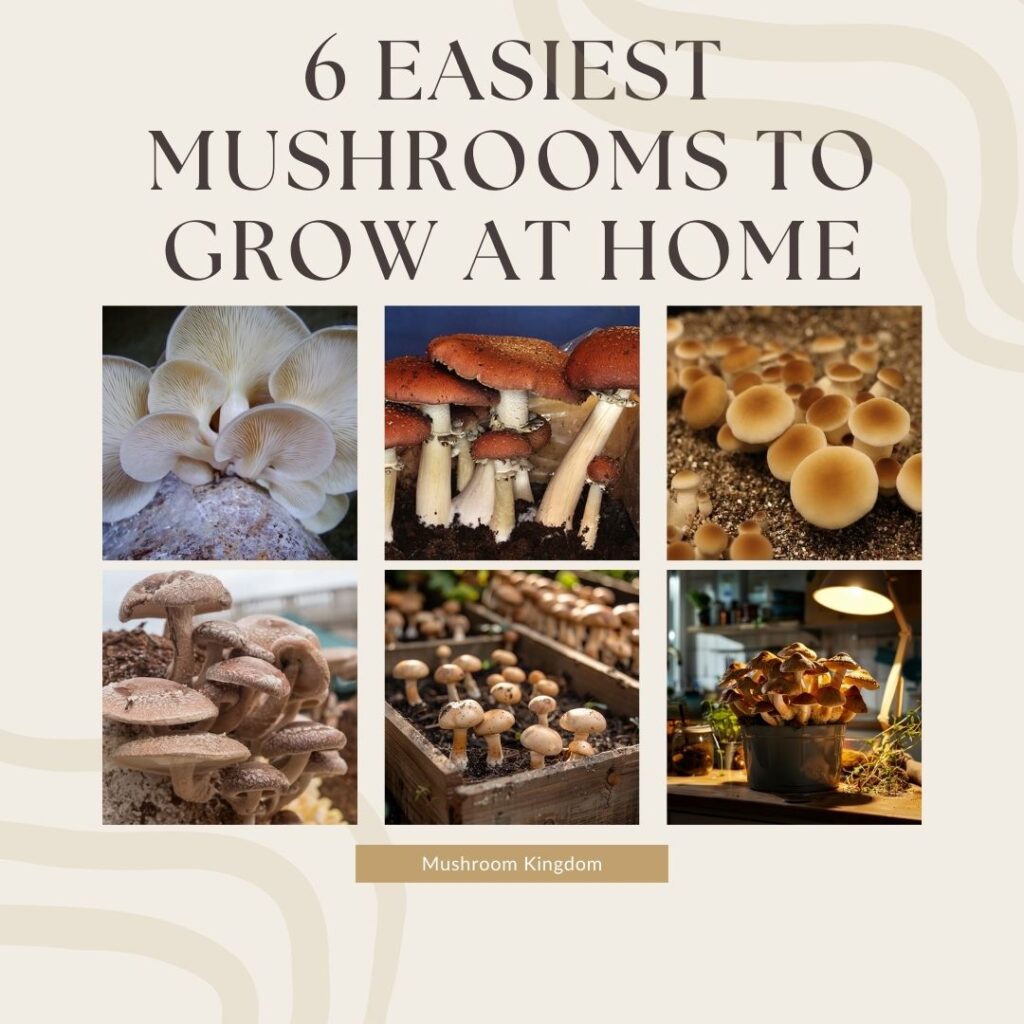One of the most fascinating nature’s wonders are mushrooms that glow in the dark. These glowing fungi, often referred to as “foxfire” or “fairy fire,” captivate scientists and nature enthusiasts alike.
In this article, we will explore the fascinating phenomenon of bioluminescent mushrooms, delve into their biology, discover where they can be found, and understand their significance.
The Science Behind Bioluminescence
Bioluminescence in mushrooms arises from a chemical reaction within the fungi. This reaction involves luciferin, a light-emitting molecule, and luciferase, an enzyme that catalyzes the reaction.
When luciferin oxidizes in the presence of luciferase, light gets produced. This light can range from green to blue and can occur continuously or intermittently, depending on the species.
Mushrooms That Glove In The Dark
1. Omphalotus olearius (Jack-o’-Lantern Mushroom)
Jack-o’-Lantern mushrooms thrive in forests across Europe and North America. This species, renowned for its vibrant greenish light emitted from its gills, enchants observers while warning them to avoid consumption due to its toxicity.
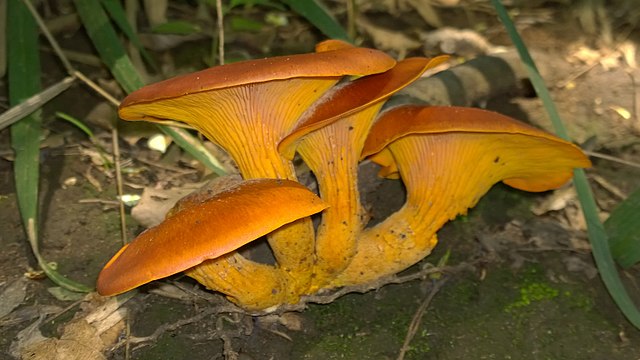
These mushrooms grow primarily on decaying wood, forming dense clusters that illuminate the forest floor with their eerie glow.
At night and under dark conditions, their bioluminescence becomes most visible, making them a sought-after spectacle for nighttime hikers and mushroom enthusiasts.
2. Panellus stipticus (Bitter Oyster)
The Bitter Oyster mushroom grows abundantly in North America, Europe, and Asia. This species prefers decaying wood in moist, shaded environments, contributing significantly to the decomposition process.
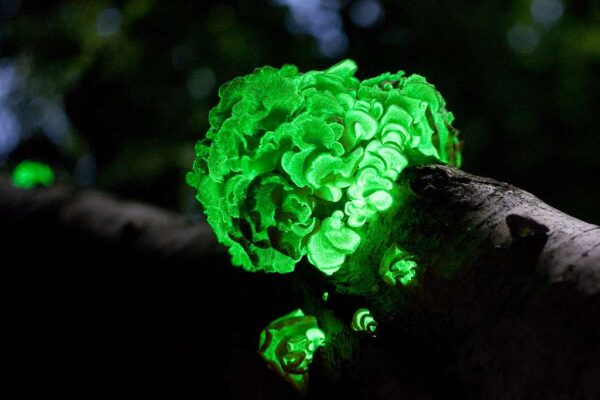
Unlike the Jack-o’-Lantern, the Bitter Oyster emits a more subtle glow, often visible only in complete darkness. When the mushroom is moist, its bioluminescence becomes most pronounced, creating a mystical appearance on damp forest nights.
The faint light adds a magical touch to the forest ecosystem, making it a fascinating subject for both amateur and professional mycologists.
3. Mycena chlorophos
In the subtropical regions of Asia and Australia, Mycena chlorophos mushrooms thrive. These mushrooms emit a soft, greenish light and typically grow in clusters on decaying wood during the wet season.
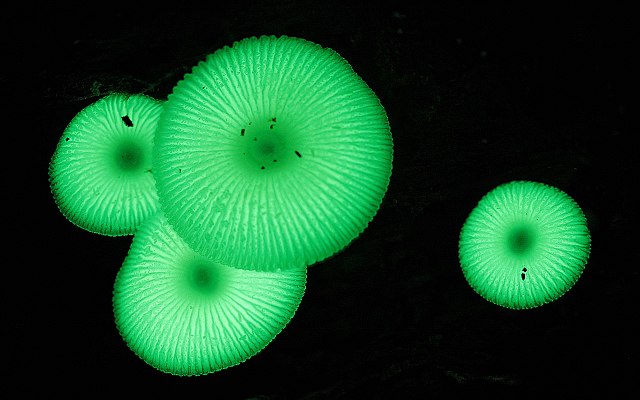
Their bioluminescence, most prominent in the dark and humid conditions of these regions, creates a surreal forest experience.
This species not only intrigues scientists studying bioluminescence but also attracts photographers and nature lovers seeking to capture their otherworldly beauty.
4. Armillaria mellea (Honey Fungus)
The Honey Fungus, found in temperate forests worldwide, has garnered notoriety for its parasitic nature, causing root rot in trees.
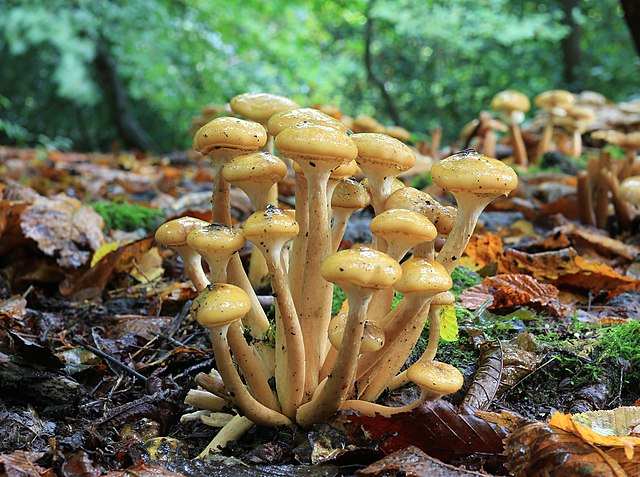
Despite its destructive tendencies, the mycelium of the Honey Fungus produces a faint bioluminescent glow. This glow becomes particularly noticeable in decaying wood, where the fungal network spreads.
The Honey Fungus forms large, connected colonies, sometimes referred to as the “humongous fungus” due to its extensive underground network.
While its glow might not be as bright as other bioluminescent mushrooms, the sheer size of its colonies can create a significant light source in forested areas, providing a unique and somewhat haunting visual effect.
5. Neonothopanus gardneri
Neonothopanus gardneri, a rare species found in Brazil, emits a bright greenish-yellow glow that can be seen from a considerable distance. Local populations have used this mushroom, known as “flor-de-coco,” as a natural lantern.
The intense bioluminescence of Neonothopanus gardneri sets it apart from many other species and has made it the subject of extensive scientific study.
6. Mycena lucentipes
In the rainforests of South America, Mycena lucentipes mushrooms create an enchanting display with their soft, blue-green glow. These mushrooms prefer growing on decaying wood and can often be found in large clusters.
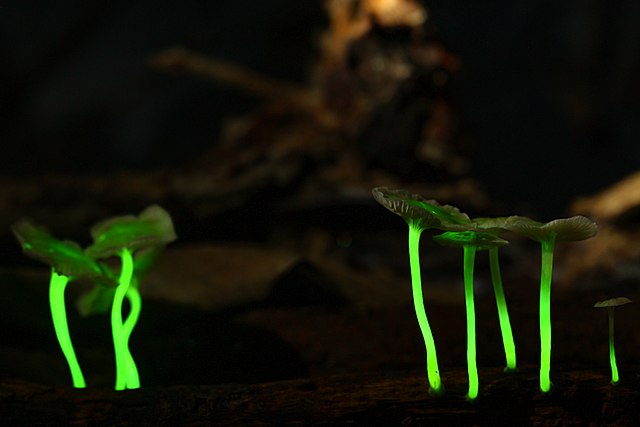
Their bioluminescence peaks during the wet season, adding a magical quality to the rainforest floor. Researchers believe the light emitted by Mycena lucentipes helps attract insects that aid in spore dispersal.
7. Mycena haematopus (Bleeding Fairy Helmet)
Mycena haematopus, commonly known as the Bleeding Fairy Helmet, can be found in Europe and North America.
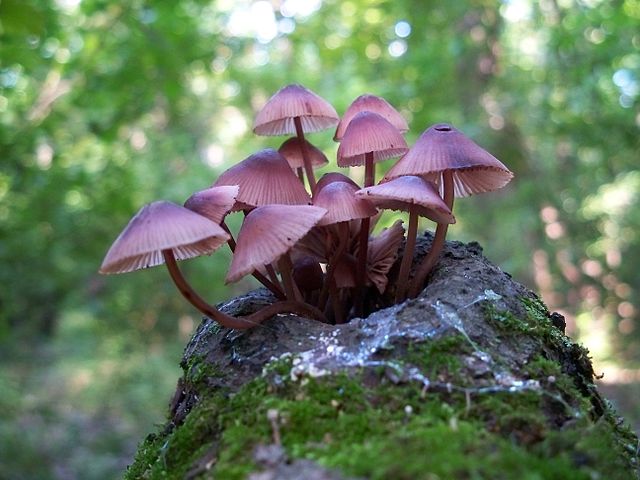
This species produces a faint bioluminescent glow, which becomes more noticeable in very dark conditions. The mushroom gets its name from the red latex that oozes from its gills when damaged.
Mycena haematopus grows on decaying wood, contributing to the decomposition process in its ecosystem.
8. Mycena pura
Mycena pura, widespread across Europe and North America, emits a subtle glow from its gills. This mushroom grows in forests and grassy areas, often forming small clusters.
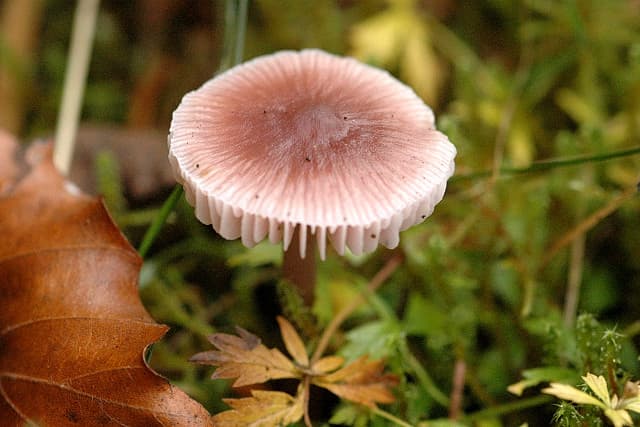
Mycena pura plays an essential role in decomposing organic matter, enriching the soil in its habitat. Although its bioluminescence is not as bright as other species, it still captivates those who encounter it during nighttime forest explorations.
9. Mycena singeri
Native to the tropical rainforests of Costa Rica, Mycena singeri produces a soft, bluish glow that illuminates the forest floor. This species thrives on decaying wood, contributing to the nutrient cycle within its ecosystem.
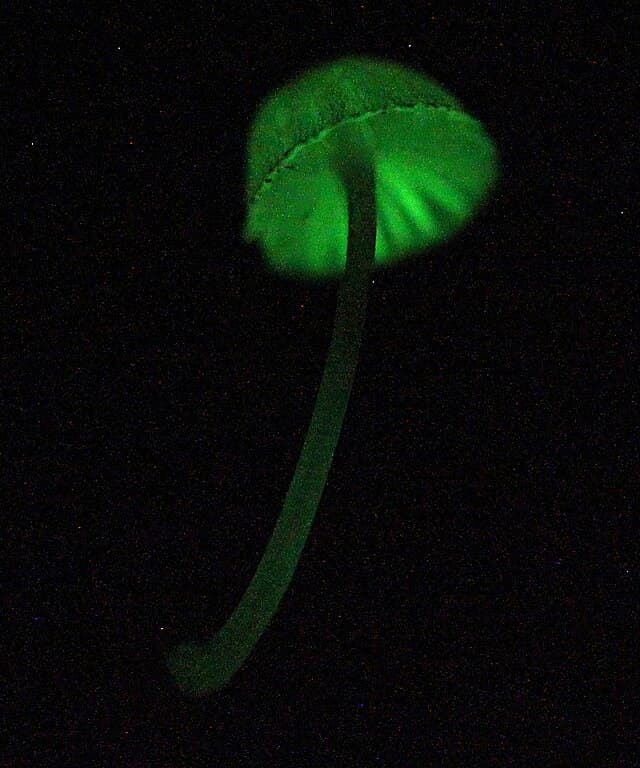
Mycena singeri mushrooms often grow in dense clusters, creating a stunning visual effect with their collective bioluminescence. Scientists continue to study this species to understand the ecological significance of its glow.
10. Gerronema viridilucens
Gerronema viridilucens, found in Australia and New Zealand, stands out with its greenish bioluminescent glow. This mushroom prefers growing on decaying wood in damp, shaded environments.
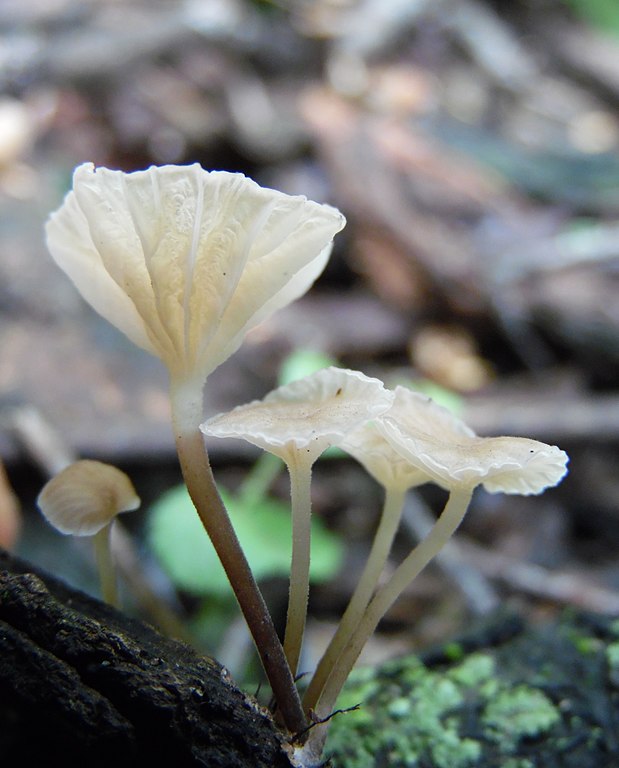
The glow of Gerronema viridilucens becomes most visible during the wet season, adding an enchanting element to the forest floor. Researchers study this species to gain insights into the biochemical pathways that produce its bioluminescence.
Also, their bioluminescence continues to inspire scientific research, folklore, and a deeper appreciation for the hidden wonders of nature.
Why Do Mushrooms Glow?
The reason behind the bioluminescence of mushrooms remains partially understood, but several hypotheses exist:
- Attracting Spore Dispersers: One theory suggests that the light attracts insects, which helps spread the spores of the mushroom, aiding in reproduction.
- Deterring Predators: Another hypothesis posits that the glow serves as a warning to potential predators, indicating that the mushroom might be toxic or unpalatable.
- Byproduct of Metabolic Processes: Some scientists believe bioluminescence could simply be a byproduct of certain metabolic processes within the fungi, with no direct evolutionary advantage.
Tips for Finding Bioluminescent Mushrooms
- Choose the Right Time: Head out after sunset, preferably on a moonless night, to maximize your chances of seeing the glow.
- Bring a Flashlight: Use a flashlight with a red filter. This helps preserve your night vision while allowing you to navigate the forest safely.
- Look Low: Many bioluminescent mushrooms grow close to the ground on decaying logs or leaf litter.
- Stay Patient: Give your eyes time to adjust to the darkness, as some mushrooms have a very faint glow that might take a few minutes to become visible.
Final Thoughts On Mushrooms That Glow In The Dark
The world of bioluminescent mushrooms is a realm of wonder and scientific intrigue. From the captivating glow of the Jack-o’-Lantern mushroom to the subtle shimmer of the Honey Fungus, these fungi illuminate the dark corners of forests around the world.
Their unique ability to produce light not only fascinates but also contributes to their ecosystems in essential ways. A
Whether you are a scientist, a nature enthusiast, or simply curious, exploring the world of bioluminescent mushrooms offers a glimpse into one of nature’s most magical phenomena.

